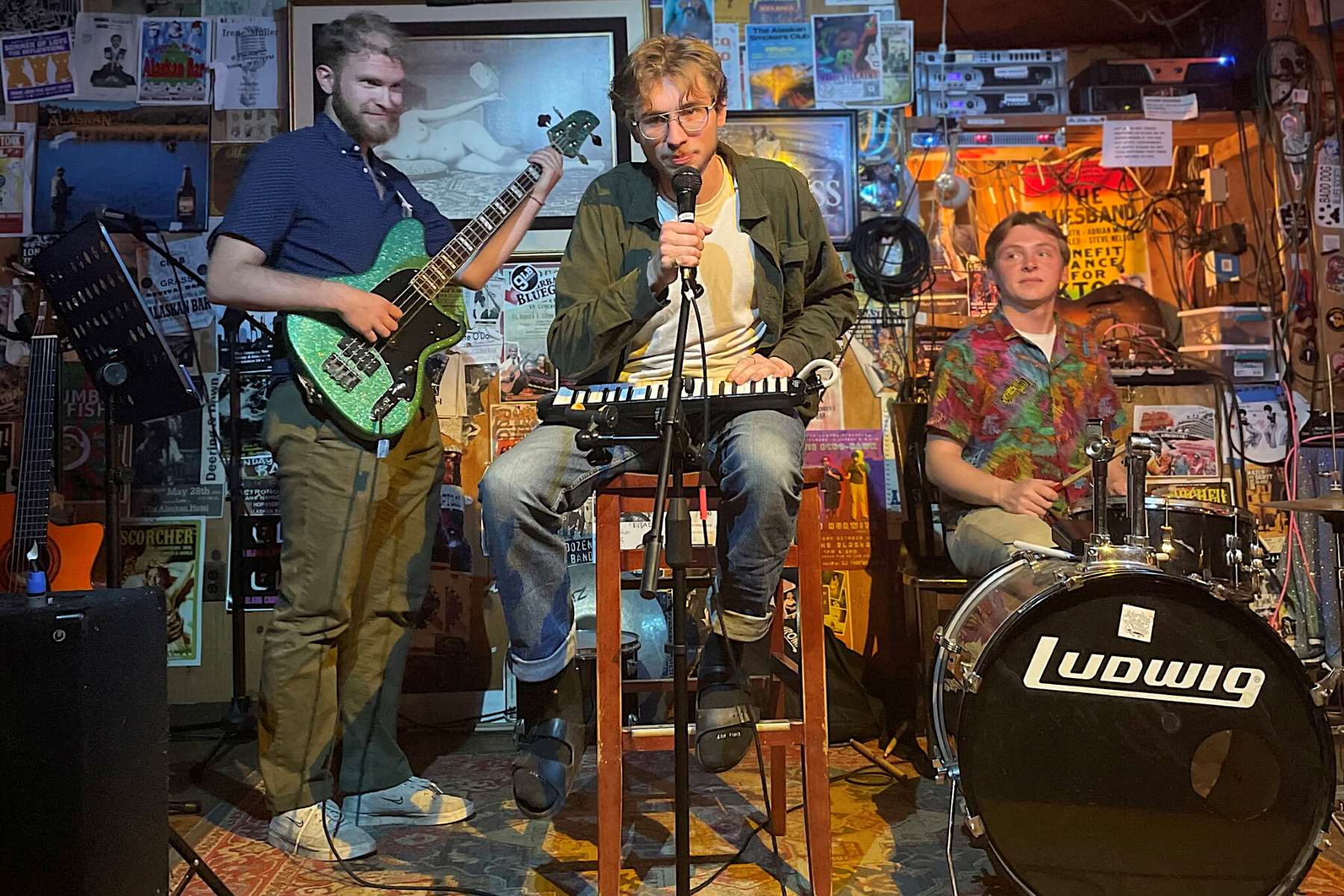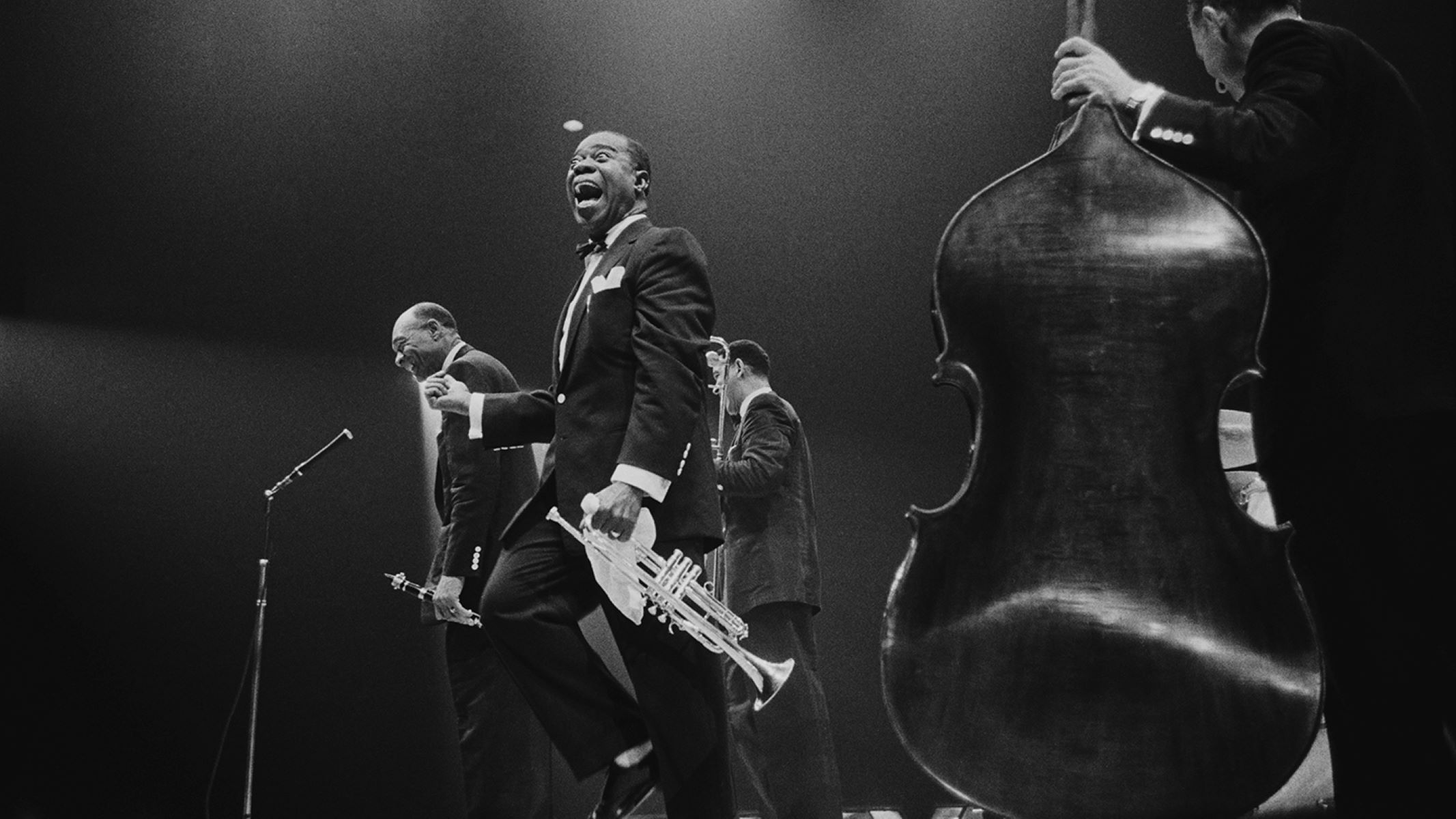

Jazz
What Is Jazz Like Today
Modified: February 15, 2024
Discover the vibrant and evolving world of jazz today. From iconic classics to innovative fusions, explore the essence and diversity of jazz music.
(Many of the links in this article redirect to a specific reviewed product. Your purchase of these products through affiliate links helps to generate commission for AudioLover.com, at no extra cost. Learn more)
Table of Contents
- Introduction
- Jazz Music: A Historical Overview
- Jazz Today: An Evolutionary Perspective
- Contemporary Jazz Styles and Subgenres
- Characteristics of Modern Jazz
- Influences on Present-Day Jazz
- The Role of Technology in Jazz Today
- Jazz Education and Training Programs
- Jazz Festivals and Performance Opportunities
- Jazz Community and Online Platforms
- Challenges and Future Prospects for Jazz
- Conclusion
Introduction
From its humble beginnings in New Orleans in the late 19th century, jazz has evolved into a global phenomenon that continues to captivate audiences today. With its rich history, innovative rhythms, and improvisational nature, jazz music has transcended boundaries and influenced countless genres.
This article aims to explore the current state of jazz and shed light on its contemporary landscape. We will delve into the various styles and subgenres that have emerged, examine the defining characteristics of modern jazz, and discuss the role of technology in shaping the genre. Additionally, we will explore the educational and performance opportunities available to aspiring jazz musicians, as well as the challenges and future prospects for jazz in the modern era.
While jazz may have its roots in the past, it thrives on innovation and embraces experimentation in its quest for artistic expression. Today, jazz musicians draw inspiration from a wide range of influences, incorporating elements from classical, rock, hip-hop, and world music into their compositions. It is this spirit of exploration and fusion that keeps jazz evolving and ensures its relevance in the 21st century.
Whether you are a die-hard jazz fan or someone new to the genre, this article will provide an in-depth look into the dynamic and ever-changing world of jazz music today. So sit back, relax, and prepare to embark on a journey through the captivating rhythms and melodies of modern jazz.
Jazz Music: A Historical Overview
Jazz music originated in the African-American communities of New Orleans, Louisiana, in the late 19th century. It emerged as a fusion of African and European musical traditions, with influences from ragtime, blues, gospel, and brass band music. The early jazz pioneers, such as Louis Armstrong, Duke Ellington, and Jelly Roll Morton, played a crucial role in defining the genre and laying the foundation for its future evolution.
During the Jazz Age of the 1920s and 1930s, jazz spread across the United States and gained international recognition. It became synonymous with the exuberance and flamboyance of the Roaring Twenties, with iconic figures like Duke Ellington and Louis Armstrong leading the way. The swing era of the 1930s and 1940s saw the emergence of big bands and the popularization of dance-oriented jazz.
By the mid-1940s, a new style called bebop emerged, characterized by complex harmonies, rapid tempos, and intricate improvisation. Bebop revolutionized jazz and laid the groundwork for subsequent developments in the genre. The 1950s and 1960s saw the rise of cool jazz, hard bop, and modal jazz, with artists like Miles Davis and John Coltrane pushing the boundaries of musical experimentation.
In the late 1960s and 1970s, jazz experienced a fusion movement, blending elements of rock, funk, and soul. Artists like Herbie Hancock, Chick Corea, and Weather Report embraced this fusion sound, incorporating electric instruments and incorporating influences from other genres. The 1980s and 1990s witnessed the emergence of contemporary jazz, incorporating elements of pop, R&B, and hip-hop.
Today, jazz continues to evolve and adapt to the influences of the modern world. The genre has diversified into various subgenres, including smooth jazz, Latin jazz, nu jazz, and acid jazz, among others. Jazz’s rich history stands as a testament to its ability to absorb and incorporate new influences while retaining its core improvisational and rhythmic elements.
Overall, the historical journey of jazz music reflects its ability to adapt and evolve over time. From its humble origins in New Orleans to its global impact, jazz remains a vital and influential genre that continues to inspire musicians and audiences around the world.
Jazz Today: An Evolutionary Perspective
Jazz music, as a genre, has always been characterized by its ability to evolve and adapt to the changing times. Today, jazz continues to thrive as a vibrant and innovative art form, driven by a diverse range of musicians and their interpretations of the genre.
One key aspect of jazz’s evolution is the exploration and fusion of different musical styles and influences. Contemporary jazz artists draw inspiration from a wide range of genres, from classical and world music to rock, funk, and even electronic music. This cross-pollination of styles has resulted in the emergence of new subgenres and hybrid sounds within the jazz landscape.
An important facet of jazz today is its emphasis on individuality and personal expression. Jazz musicians are known for their improvisational skills, where they create music spontaneously in the moment. This freedom of expression allows for endless possibilities and encourages musicians to push the boundaries of their creativity.
Furthermore, collaborations between jazz musicians and artists from other genres have become more common in recent years. These collaborations not only introduce jazz to new audiences but also bring fresh perspectives and influences into the genre. For example, jazz artists collaborating with hip-hop or pop singers, or incorporating electronic elements into their compositions, create exciting and innovative music that resonates with a wider audience.
Another significant development in jazz today is the increasing recognition and representation of women in the genre. Historically, jazz has been male-dominated, but talented female musicians are now breaking barriers and making their mark. Women artists like Esperanza Spalding, Hiromi Uehara, and Terri Lyne Carrington have garnered acclaim for their virtuosity and unique contributions to contemporary jazz.
The digital age has also played a crucial role in the evolution of jazz. The internet has provided platforms for jazz musicians to share their music, collaborate with artists from different parts of the world, and gain exposure without the traditional constraints of the music industry. Online streaming services and social media have made it easier for jazz enthusiasts to discover new artists and connect with the jazz community.
Overall, jazz today is an ever-evolving genre that embraces diversity, innovation, and collaboration. Its ability to incorporate influences from various genres and adapt to technological advancements ensures its relevance and longevity. As jazz musicians continue to push boundaries and explore new territories, the future of jazz remains bright and filled with possibilities.
Contemporary Jazz Styles and Subgenres
The world of contemporary jazz is incredibly diverse, with numerous styles and subgenres that reflect the evolution and fusion of the genre over time. Here are some of the prominent contemporary jazz styles and subgenres:
- Fusion Jazz: Fusion jazz combines elements of jazz with funk, rock, and R&B. This subgenre emerged in the late 1960s and early 1970s, with artists like Miles Davis and Weather Report leading the way. Fusion jazz often features electric instruments, intricate rhythms, and improvisation fused with the energy and groove of other genres.
- Smooth Jazz: Smooth jazz is a more accessible and commercially oriented subgenre characterized by its melodic and soothing qualities. It often incorporates elements of R&B, pop, and funk, with a focus on lush harmonies and polished production. Smooth jazz has gained mainstream popularity and has been widely played on radio stations.
- Latin Jazz: Latin jazz is a vibrant fusion of jazz with Afro-Cuban and Latin American rhythms and influences. Artists like Tito Puente and Chucho Valdés are known for incorporating traditional Latin instruments and rhythmic patterns into their jazz compositions. Latin jazz is celebrated for its infectious rhythms and colorful melodies.
- Contemporary Big Band: This subgenre builds upon the tradition of big bands from the swing era but infuses modern elements such as contemporary harmonies, intricate arrangements, and adventurous improvisation. It combines the power and drive of a large ensemble with a fresh and innovative approach to composition and performance.
- Free Jazz/Avant-Garde: Free jazz, also known as avant-garde jazz, is characterized by its departure from traditional melodic and harmonic structures. It emphasizes improvisation that is not restricted by conventional rules or musical forms. Artists like Ornette Coleman and John Coltrane have pushed the boundaries of jazz through this experimental and challenging subgenre.
- Nu Jazz: Nu jazz refers to the fusion of jazz with electronic music and modern production techniques. It combines the improvisational aspect of jazz with electronic beats, samples, and textures. Nu jazz artists often incorporate elements of hip-hop, house, and trip-hop, creating a modern and cutting-edge sound.
These are just a few examples of the vast array of contemporary jazz styles and subgenres. Each subgenre brings its unique flavor and artistic approach to the genre, showcasing the versatility and adaptability of jazz music in the modern era. The exploration and blending of different styles and influences continue to push the boundaries of contemporary jazz and ensure its relevance and vitality.
Characteristics of Modern Jazz
Modern jazz is characterized by a variety of distinct musical elements that set it apart from its predecessors. While retaining the core improvisational and rhythmic aspects of traditional jazz, modern jazz embraces new influences and techniques to create a unique and innovative sound. Below are some key characteristics of modern jazz:
- Exploratory Harmonies: Modern jazz often features complex and adventurous harmonic structures. Musicians go beyond the traditional chord progressions and explore dissonance, extended chords, and unconventional tonalities. This allows for greater harmonic freedom and expression within improvisation.
- Rhythmic Diversity: Modern jazz draws inspiration from various rhythmic traditions, incorporating intricate and syncopated rhythms into its compositions. Musicians experiment with odd time signatures, polyrhythms, and cross-rhythms, creating rich and captivating rhythmic textures.
- Innovative Instrumentation: Modern jazz musicians embrace a wide range of instruments and sound palettes. They may incorporate electric instruments alongside traditional acoustic instruments, experiment with synthesizers and electronic effects, or explore unconventional instrumental combinations. This diversity adds depth and versatility to modern jazz compositions.
- Experimental Improvisation: Improvisation remains a core element of modern jazz, but the approach has evolved. Musicians often push the boundaries of improvisation, incorporating non-traditional scales and modes, intervallic leaps, and complex melodic patterns. This experimentation allows for more diverse and unpredictable soloing.
- Genre Fusion: Modern jazz frequently incorporates elements from other musical genres, such as rock, funk, hip-hop, world music, or electronic music. The blending of these influences creates a hybrid sound that expands the sonic possibilities of jazz and appeals to a broader audience.
- Emotional Depth: Modern jazz compositions often delve into deeper emotional realms, exploring a wide range of moods and expressions. Musicians convey their personal experiences and feelings through their compositions and improvisations, creating a profound and evocative musical experience.
These characteristics exemplify the innovative and forward-thinking nature of modern jazz. By embracing new harmonies, rhythms, instrumentation, and improvisational techniques, modern jazz musicians have expanded the boundaries of the genre and paved the way for its continued evolution and relevance in contemporary music.
Influences on Present-Day Jazz
Present-day jazz is a genre that thrives on innovation and draws inspiration from a wide range of musical influences. While still rooted in its rich history, jazz has been shaped by various factors that continue to impact how it is composed, performed, and appreciated today. Here are some of the key influences on present-day jazz:
- Global Music Traditions: Jazz has always been open to embracing musical traditions from around the world. Musicians today are influenced by diverse global sounds, such as Afro-Cuban rhythms, Indian classical music, Brazilian bossa nova, and West African grooves. These influences add depth and richness to contemporary jazz compositions.
- Popular Music Genres: Contemporary jazz reflects the influences of popular music genres, including rock, funk, hip-hop, and electronic music. Artists incorporate elements from these genres, such as catchy grooves, electronic beats, and sampled sounds, to create a fusion of styles that resonates with modern audiences.
- Classical Music: Classical music has long been a source of inspiration for jazz musicians. The works of composers like Bach, Stravinsky, and Debussy have influenced jazz compositions, arrangements, and improvisation techniques. Contemporary jazz musicians continue to borrow concepts from classical music and integrate them into their own artistic expressions.
- Avant-Garde and Experimental Music: The avant-garde and experimental music movements have had a significant impact on present-day jazz. Artists incorporate innovative techniques, unconventional instrumentation, and abstract compositional approaches to push the boundaries of jazz, creating captivating and thought-provoking musical experiences.
- Social and Cultural Issues: Jazz has always been intertwined with social and cultural movements. Present-day jazz reflects a broader range of perspectives, addressing and responding to contemporary social and political issues. Jazz musicians use their music as a platform for expressing emotions, making statements, and fostering dialogue.
- Technology: Technology has revolutionized the way jazz is created and consumed. Musicians now have access to advanced recording techniques, digital instruments, and online platforms for collaboration and distribution. Technology enables innovative approaches to composition, production, and live performances, expanding the possibilities for jazz music.
These influences, along with the constant exploration and collaboration within the jazz community, contribute to the ever-evolving nature of the genre. Present-day jazz musicians embrace and celebrate this diversity of influences, blending them with the foundational elements of jazz to create their own unique voice and sound.
The Role of Technology in Jazz Today
Technology has had a profound impact on the world of jazz, transforming the way it is created, recorded, shared, and experienced. From the early days of recorded music to the modern digital age, technology has played a crucial role in shaping the development and accessibility of jazz. Here are some key ways technology influences jazz today:
- Recording and Production: Advancements in recording technology have revolutionized the way jazz albums are made. Digital recording techniques allow for precise editing, multitrack layering, and the manipulation of sound. This enables artists to experiment with different sonic textures, resulting in more polished and intricate jazz recordings.
- Collaboration and Global Connectivity: Technology has made it easier for jazz musicians to collaborate with others across the globe. Through online platforms, musicians can share their compositions, exchange ideas, and record parts remotely. This has opened up new possibilities for cross-cultural collaborations, bridging geographical distances and bringing together diverse musical influences.
- Access to Knowledge and Learning: The internet has become a vast resource for jazz education. Online tutorials, video lessons, and forums offer aspiring musicians access to a wealth of information and learning opportunities. Jazz enthusiasts can also access digital archives and recordings of jazz legends, enabling them to study the history and evolution of the genre.
- Distribution and Promotion: Digital platforms, such as streaming services and online music stores, have made it easier for jazz musicians to distribute and promote their music. Independent artists can reach a worldwide audience without the need for traditional label support. Jazz festivals and live performances can also be streamed online, allowing fans from around the globe to experience concerts virtually.
- Instrument Technology: Technology has also influenced the development of instruments used in jazz. Electric instruments like the electric guitar, electric bass, and synthesized keyboards have expanded the sonic palette available to jazz musicians. Additionally, software instruments and effects have provided more options for creating unique sounds and textures.
- Live Performances and Improvisation: Technology has enhanced the live jazz experience. Musicians can utilize looping pedals, samplers, and live electronic effects to create layered and dynamic performances. The integration of visuals and lighting effects enhances the atmospheric aspects of live jazz concerts, creating immersive and engaging experiences for the audience.
The role of technology in jazz today is multifaceted, impacting every aspect of the genre. It has opened up new avenues for creativity, collaboration, and access to knowledge and resources. While technology can never replace the magic of live jazz performances, it has certainly expanded the possibilities for creating, sharing, and experiencing this dynamic and ever-evolving music.
Jazz Education and Training Programs
Jazz education and training programs play a vital role in preserving the history, nurturing talent, and fostering the future of jazz music. These programs provide aspiring musicians with the skills, knowledge, and opportunities to develop their craft and become proficient in the art of jazz. Here are some key aspects of jazz education and training programs:
- Formal Education: Many colleges, universities, and music schools offer jazz-specific programs and degrees. These institutions provide comprehensive curricula that cover jazz theory, history, improvisation, composition, and ensemble performance. Students receive instruction from renowned jazz educators and have access to practice facilities, performance opportunities, and jazz ensembles.
- Summer Jazz Camps and Workshops: Jazz camps and workshops are intensive programs held during the summer months, providing students of all ages with immersive experiences in jazz. These programs often include ensemble coaching, masterclasses, improvisation workshops, and performances by guest artists. Summer jazz programs offer a focused and immersive learning environment for students to refine their skills and interact with other jazz enthusiasts.
- Masterclasses and Clinics: Masterclasses and clinics bring renowned jazz artists to educational institutions or performance venues to share their expertise and insights. These sessions typically involve live demonstrations, discussions on jazz techniques, improvisation, and mentorship opportunities. Masterclasses and clinics provide valuable guidance and inspiration for aspiring jazz musicians.
- Jazz Festivals: Jazz festivals often include educational components such as workshops, lectures, and panel discussions. These educational sessions give participants the opportunity to learn from experienced jazz musicians, educators, and industry professionals. Jazz festivals provide a platform for networking and exposure to a broader jazz community.
- Jazz Mentorship Programs: Mentorship programs connect aspiring jazz musicians with established professionals for personalized guidance and support. Mentors offer advice on technique, style, performance, and career development. These programs help bridge the gap between education and professional practice, providing invaluable guidance for emerging jazz musicians.
- Online Jazz Education: The internet has opened up numerous opportunities for online jazz education. Online platforms offer instructional videos, courses, and interactive learning resources that can be accessed anytime and anywhere. This accessibility allows individuals from around the world to access high-quality jazz education regardless of their geographical location.
Jazz education and training programs contribute significantly to the growth and development of jazz music. They nurture talent, foster a deeper understanding of the genre, and provide aspiring musicians with the necessary skills and opportunities to pursue a career in jazz. These programs not only ensure the preservation of jazz traditions but also facilitate the continued evolution and innovation within the genre.
Jazz Festivals and Performance Opportunities
Jazz festivals and performance opportunities play a crucial role in showcasing the talent, fostering cultural exchange, and promoting the appreciation of jazz music. These events provide platforms for both established and emerging jazz musicians to share their artistry, connect with audiences, and collaborate with fellow artists. Here are some key aspects of jazz festivals and performance opportunities:
- Jazz Festivals: Jazz festivals bring together a diverse range of jazz artists, ensembles, and enthusiasts in celebration of the music. These multi-day events feature performances by internationally renowned musicians, local talents, and emerging artists. Jazz festivals often encompass various styles and subgenres, providing a rich and diverse experience for attendees.
- International Exchange: Jazz festivals often serve as platforms for cultural exchange, showcasing jazz musicians from different countries and promoting cross-cultural collaborations. They create opportunities for artists from different backgrounds to share their unique perspective on jazz and fuse their diverse influences. This exchange contributes to the dynamic evolution of jazz as a global art form.
- Community Engagement: Jazz festivals engage with local communities by offering outreach programs, educational activities, and free performances. Workshops, masterclasses, and clinics are organized to provide aspiring musicians, students, and jazz enthusiasts with valuable learning experiences and opportunities to interact with professionals.
- Emerging Artist Showcases: Jazz festivals often provide a platform for emerging artists to showcase their talent and gain exposure. These showcases give promising musicians the opportunity to perform in front of larger audiences, connect with industry professionals, and build their musical careers.
- Jazz Competitions: Some jazz festivals host competitions that recognize exceptional emerging jazz talent. These competitions provide a platform for young musicians to showcase their skills, receive constructive feedback from esteemed judges, and potentially launch their careers in the jazz industry. Winning a jazz competition can open doors to performance opportunities and further recognition.
- Club Performances: Jazz festivals often extend beyond the main festival grounds, with performances taking place in local clubs and venues. These club performances offer an intimate setting for both established and up-and-coming jazz musicians to connect with audiences on a more personal level.
- Jazz Cruises: Jazz cruises provide a unique experience where attendees enjoy performances by jazz musicians while sailing on a cruise ship. These immersive musical journeys often feature a lineup of renowned artists and offer a combination of live performances, workshops, and jam sessions.
Jazz festivals and performance opportunities serve as catalysts for artistic growth, cultural exchange, and audience engagement. They not only celebrate the rich tradition of jazz music but also foster its continued innovation and evolution. Whether in large festival settings or intimate club performances, jazz festivals and performance opportunities provide a vibrant and immersive experience for both artists and audiences alike.
Jazz Community and Online Platforms
The jazz community is a vibrant and close-knit network of musicians, educators, enthusiasts, and industry professionals who share a passion for the genre. Over the years, advancements in technology and the rise of online platforms have transformed how jazz musicians connect, collaborate, and engage with their community. Here are some key aspects of the jazz community and online platforms:
- Online Jazz Communities: Online platforms have facilitated the formation of virtual jazz communities, allowing musicians and fans from around the world to connect and share their love for jazz. Social media groups, forums, and online communities create spaces for discussions, collaborations, and the sharing of information, recordings, and performances.
- Collaborative Opportunities: Online platforms have made it easier for jazz musicians to find and collaborate with others. Musicians can connect with fellow jazz artists, form virtual bands, share and exchange musical ideas, and even record and produce music remotely. This level of connectivity expands collaborative possibilities and fosters creativity across geographical boundaries.
- Educational Resources: Online platforms provide a wealth of educational resources for jazz musicians and enthusiasts. Jazz tutorials, instructional videos, online courses, and music theory resources can be accessed at any time, allowing individuals to learn at their own pace and develop their skills. Online platforms also offer opportunities for live-streamed masterclasses and webinars with renowned jazz educators and performers.
- Jazz Streaming and Online Radio: Online music streaming services and dedicated jazz radio stations have made it easier than ever to discover and listen to a vast catalog of jazz recordings. These platforms provide exposure to a wide range of artists, albums, and subgenres, allowing jazz enthusiasts to explore and expand their musical horizons.
- Virtual Performances and Livestreams: Online platforms have become essential for jazz musicians to reach their audiences, especially in times when live performances are limited. Virtual concerts, live-streamed performances, and recorded videos allow musicians to share their music, maintain engagement with their fans, and generate income through online ticket sales or donations.
- Promotion and Marketing: Online platforms provide jazz musicians with tools to promote their music and engage with their audience. Artists can maintain an online presence through their websites and social media profiles, sharing updates, releasing new music, and engaging directly with fans. This direct connection helps artists build a loyal and engaged following.
- Crowdfunding and Fan Support: Online platforms have also facilitated crowdfunding campaigns, allowing jazz musicians to seek financial support from their fans and community. Jazz fans can contribute to recording projects, tour expenses, or other creative endeavors, forging a deeper connection between the artists and their supporters.
The growth of online platforms has enriched the jazz community by fostering collaboration, sharing resources, and expanding access to a global audience. These platforms provide opportunities for connection, inspiration, and growth within the jazz community, ensuring that the music continues to thrive and evolve in the digital age.
Challenges and Future Prospects for Jazz
While jazz continues to captivate audiences and inspire musicians around the world, it also faces certain challenges in the modern era. However, with resilience and adaptation, jazz possesses promising future prospects. Let’s explore some of the challenges that jazz encounters and the potential opportunities that lie ahead:
- Mainstream Popularity: Jazz, with its complex harmonies and improvisational nature, can sometimes be perceived as inaccessible or niche. Breaking into the mainstream music industry and capturing the attention of a broader audience remains a challenge. However, jazz fusion with popular genres and innovative approaches can attract a wider listenership and introduce jazz to new audiences.
- Preserving Jazz History: As jazz evolves, there is a risk of losing touch with its rich history and cultural significance. Preserving the legacy and lineage of jazz pioneers while embracing innovation and experimentation is vital for the genre’s growth and continuation.
- Education and Funding: Jazz education programs can struggle with limited resources and funding, making it challenging to provide high-quality education and training. Increased support and investment in jazz education can ensure the development of talented musicians and the preservation of the art form.
- Adapting to Technological Advances: While technology has opened up new opportunities for jazz, it also presents challenges. The rapid pace of technological advancements requires musicians to continuously adapt and embrace digital tools and platforms while maintaining the essence and authenticity of live jazz performances.
- Promoting Diversity and Inclusion: Jazz, like any other genre, needs to actively promote diversity and inclusion. Ensuring representation of diverse musicians and perspectives within the jazz community will contribute to the continued growth and relevance of the genre.
- Embracing Innovation: Jazz has always thrived on innovation and pushing artistic boundaries. Fostering an environment that encourages experimentation, collaboration, and cross-genre exploration will help jazz break new ground and attract a younger and more diverse audience.
Despite these challenges, the future prospects for jazz are promising. The resilience of the jazz community, combined with the growing interest in diverse musical genres and the availability of online platforms, creates opportunities for jazz to flourish.
Jazz’s ability to adapt to changing times, embrace new influences, and incorporate technological advancements will ensure its relevance and continued evolution. By maintaining a balance between honoring its roots and embracing innovation, jazz can reach new heights and captivate audiences for generations to come.
Conclusion
Jazz music, with its rich history and ever-evolving nature, continues to captivate audiences and inspire musicians worldwide. From its humble beginnings in New Orleans to its global reach in the modern era, jazz has cemented its place as a powerful and influential art form.
Through this article, we have explored the current state of jazz and witnessed its evolution into various contemporary styles and subgenres. We have seen how jazz musicians draw inspiration from a multitude of genres, incorporating diverse influences into their compositions. The characteristics of modern jazz reflect a balance between innovation and preserving the core elements that define the genre.
Technology has played a significant role in shaping jazz today, from recording techniques and online platforms to virtual performances and educational opportunities. It has provided new avenues for collaboration, bridging geographical distances and fostering a global jazz community.
While there are challenges, such as reaching a mainstream audience and preserving jazz history, the future prospects for jazz remain promising. Jazz education and training programs, jazz festivals, and online platforms continue to support the growth and exposure of jazz music.
Jazz’s ability to adapt, embrace innovation, and promote diversity will ensure its ongoing relevance and evolution. With its authenticity, improvisation, and powerful emotional expression, jazz will continue to captivate audiences and inspire generations to come.
So let’s celebrate the vibrant and ever-changing world of jazz, appreciating both its roots and its ability to push boundaries, as we continue to enjoy and support this timeless genre.











